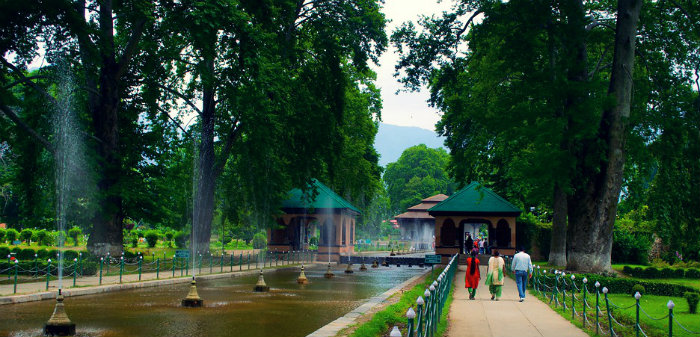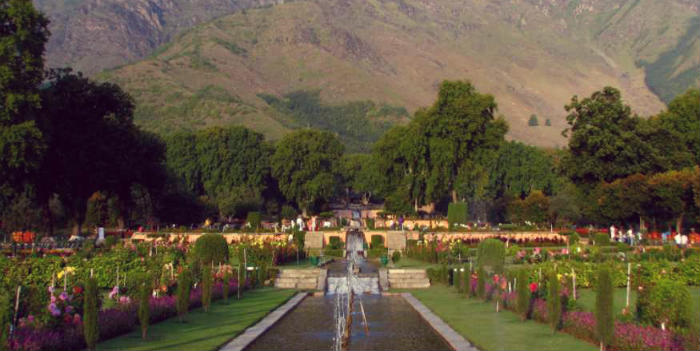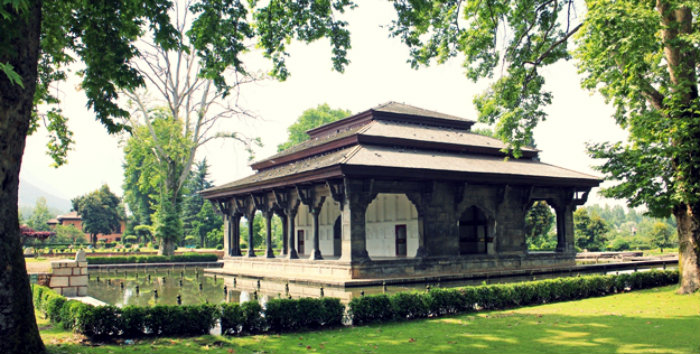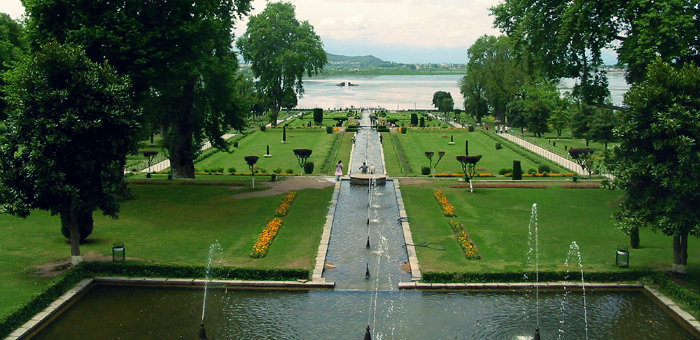Being a traveller, it is hard for me to understand how did Akbar didn’t bother to go to Kashmir even after capturing it. I know India has a lot of beautiful avenues for the enchanting the King, but there is a reason, the valley of Kashmir is called heaven. In 1586, Akbar sent an army of 40000 horsemen and 20000-foot soldiers to conquer Kashmir. He won the battle against the Chaks. But he was not awed to go there for the next three years. It is only when one of his nine gems, Abul Fazal, wrote to him about Kashmir that he was enchanted to go there. What did he say? Yes, that’s interesting to know because this is what started the love affair of Mughal emperor with the valley. The earthly paradise, Shalimar Gardens of Kashmir, rose as one of the offspring of this affair.

How it all started?
I now wonder that Akbar may not have visited Kashmir but since Chaks had been regular in sending gifts and pleasantries, he must be having some idea about the place? Or is it that, before Abul Fazal, nobody told him about Kashmir? Whatever the case may be, but when Abul Fazal called Kashmir as the garden of perpetual springs where the streams were sweet to taste, its waterfall music to the ear and its climate invigorating, Akbar’s heart was bewitched. Kashmir became the treasure holiday home for Mughals. Jahangir who had always accompanied his father in trips to Kashmir was so much wooed by the place that it is said that he travelled 13 times a year with the whole royal entourage. That’s a lot of time, considering they travelled on elephants and horses! And his love for Kashmir was also shared by his beloved wife Noor Jahan as well.
Shalimar Garden – A gift from Jahangir and Noor Jahan
In their sixteen years of marriage, Nur Jahan and Jahangir embellished Kashmir with many gardens and buildings. When Shalimar Garden was built, the couple was enticed by the beauty of the surroundings and availability of spring water for decorating the garden. Six kilometres from Srinagar, Shalimar Garden is set between Dal Lake and the hill from which the stream flows into the Dal Lake. People believe that Jahangir gave Shah Jahan the responsibility of building a dam on the stream that comes down from the hill so that Shalimar Garden is bestowed by a waterfall.

Shalimar Garden is divided into three sections of terraces, each made differently to use. The lower terrace which is near Dal Lake was made as an entrance and garden for public sight, along with the hall for the public hearing, popularly known as, Deewan-e-Aam. The terrace above that was for the Emperor, where he had his garden and Turkish bath built for him, within the enclosed sidewalls. This terrace also has the throne of the Emperor above the waterfall which is still visible and Hall of Private, known as, Deewan-e-Khaas. The highest Terrace had a ladies’ garden which is detailed by a beautiful marble pavilion.

Shalimar Garden – Not just any beautiful garden
The lovely gardens of Shalimar set in the backdrop of Dal Lake and adorned with long fountain filled canals are not just the beauty to behold but they are made as an imprint of heaven. Like all the Mughal Gardens, Shalimar Gardens are also based on Charbagh concept, a tradition brought from Persian culture. Water being the important factor in Charbagh flows throughout the garden as the token of eternal spring in paradise. The plants and trees in the garden were chosen carefully as the symbolic version of the land above. While the cypress trees represented death and eternity, fruit trees were the symbol of life and hope. The scent of flowers like lilac, narcissus, rose, jasmine and many others, made the whole aura an earthly paradise.

Shalimar Garden – History beyond history
If we refer the Abul Fazal’s notes or the Jahangir’s Diary on Kashmir, it seems like all the beautiful architectures and gardens are credited to the Mughal Empire. But there are legends which tell a different story. One such old legend says, that the founder of the city of Srinagar, Pravarsena II, had built a villa during his reign between 400-415 CE, on the edge of Dal Lake and named it Shalimar. The villa got lost in time but the place was still called Shalimar. Then, in 1619 Jahangir amplified this ancient garden into a royal garden, naming it Farah Baksh. Further, in 1630 Emperor Shah Jahan extended the garden and named it Faiz Baksh. The Royal Garden was then further augmented during Maharaja Ranjit Singh and Maharaja Hai Singh but the name, Shalimar Bagh had been immortal to any advancement.
Shalimar Gardens – Present
The road that is made around the Dal Lake now has changed the entrance of Shalimar Gardens completely. In those days, Shalimar garden was approached via boat and Dal Lake was also the part of the garden. Though, like its name, the beauty of the garden is eternal. The mighty chinar and willow trees, fragrant flower beds, over 400 fountains and carved pavilions is a bewitching experience. And spending just Rs.24 on this royal experience is splendid.
You know Jahangir and Nur Jahan were so captivated by the beauty of Chinar Trees that every garden and architecture they commissioned was embellished by those. Now when only a few of them remain, it is the Chinar trees which are symbolic of those bygone properties. Just so you know, the Shalimar Bagh in Delhi, which is the district part of Delhi Development Authority, was constructed in same lines with Shalimar Garden, Kashmir. I know now the similarities are rare to find.
